Water-based paint: types and subtleties of application
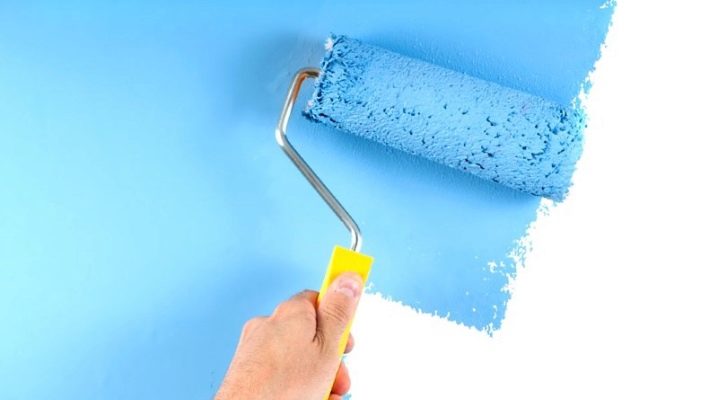
In the modern world, the environmental safety of building materials, their durability, ease of use and a minimum of time spent for the implementation of all design ideas are highly valued. Therefore, along with high-quality oil paints, water-based compositions are also widely used. Since the types of this finishing material also differ in the way they are used for different rooms and surfaces, then before using them for repairs, you need to find out which type of such coating is right for you.
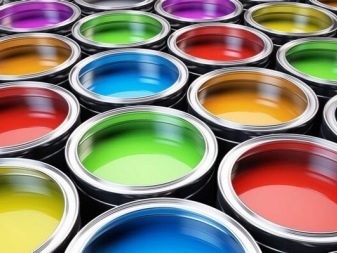
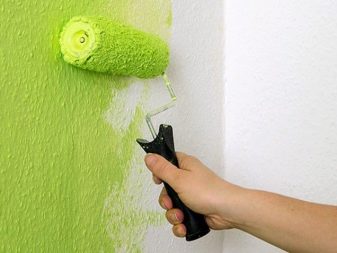
Peculiarities
The water-based composition includes various polymers or mineral particles, additives, tinting pigments. When painting any surface of walls or ceilings, the water component dries up, leaving a polymer film or a film of mineral particles on the surface.
Emulsion paint does not have a strong chemical odor when dried. Such a magical property allows this emulsion to be used for work indoors and for people who are allergic to this type of building materials.
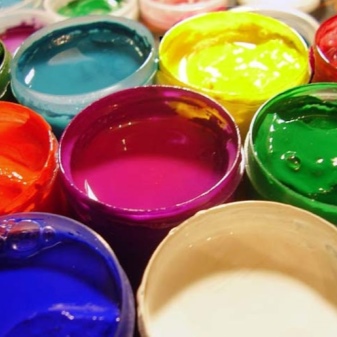
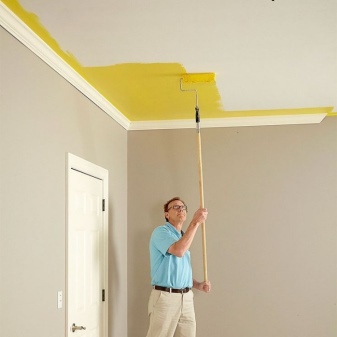
Advantages and disadvantages
The positive aspects of using this staining material include:
- It is very easy to apply on any previously plastered surface - concrete, wood, gypsum concrete. Brushes and rollers can be easily washed with water after use.
- This paint is easily diluted as the main solvent is water. Thanks to this dilution, it becomes safe and non-toxic, therefore it is recommended for interior work, even in rooms with closed windows.
- It differs from all other types of paint in that it dries faster than all other types.
- After painting, there is no unpleasant smell in the room for many weeks, as after using other types of finishing materials.
- Water-based paints differ in that they are not susceptible to peeling if all the rules for storage, application and preparation of the surface for painting are observed.

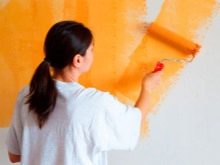
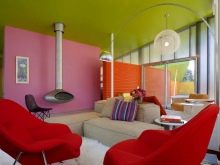
- An important feature is environmental safety for humans. This coating is non-toxic, not harmful to humans, without a strong chemical odor.
- Dirt from surfaces painted with certain types of water emulsion can be easily washed off with water and any detergent.
- Also important features are incombustibility and increased resistance to the effects of various alkalis.
- Certain types of water emulsion are recommended for rooms with high humidity - for a bath or a kitchen, but not only because they have increased water-repellency, but also because they are breathable, as they easily pass air and steam through their layers.
- This type of paint has antibacterial properties.
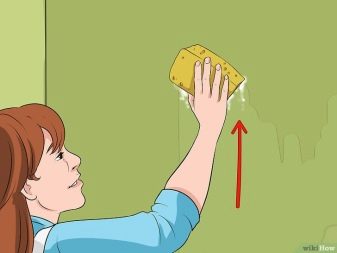
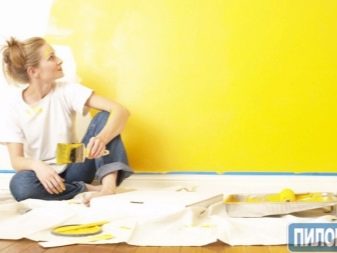
- The service life depends on the specific type of paint. Currently, you can pick up one that will not lose its presentation for 20 years.
- Some types of water emulsion have such a density when stained that they easily mask cracks up to 2 mm.
- The water emulsion is suitable for any interior solution, since it can be easily tinted even on its own, and the variety of colors and the possibility of using them in different percentages with paint gives such a spectrum of colors and shades that makes it possible to embody all the dreams and fantasies of professional designers and amateurs in the renovation.
- Low price and excellent quality allow VE paints to compete with many types of wall and ceiling decoration for any type of repair work.

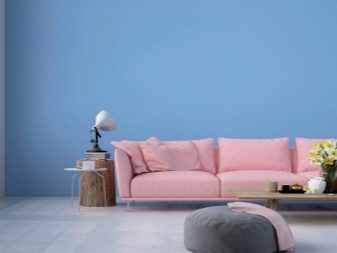
This type of paint also has disadvantages:
- The use of water emulsion is impossible at subzero temperatures, so the minimum temperature limit is up to +5 degrees Celsius. Already at 0 degrees, it freezes and loses all its properties.
- Some types of paints are characterized by a short service life, but these types of emulsions are becoming rare and are being ousted from the market by more durable paints.
- Not always suitable for metal or glossy surfaces due to the large amount of water in their composition.
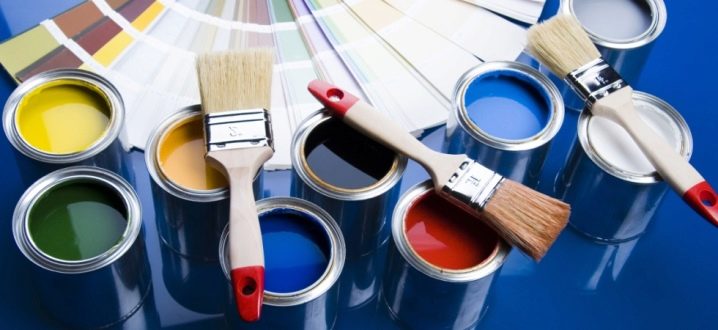
Specifications
With the help of familiarization with the technical characteristics of a particular type of VE-paint, you can choose the desired type for this particular surface.
When choosing, pay attention to the following factors:
- Composition. Depending on the fillers, thickeners, antiseptics contained in the aqueous solution, this paint may or may not be suitable for interior or exterior work, for wet or dry rooms.
- Application. What materials are suitable for covering this finishing material. Is it possible to paint wood, concrete, metal, enamels.
- Viscosity. How much and with what can the VE paint be diluted.
- Consumption. Depends on the base material, its absorption characteristics. Typically, the consumption of the coloring emulsion is 200-400 ml per m2.

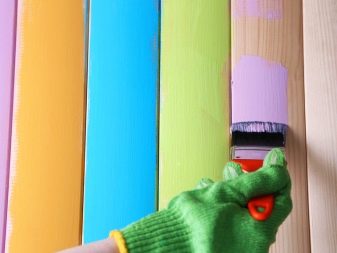
- Specific gravity. By the weight of the can, you can determine the quality of the paint. A good water emulsion has a density of about 1.5 kg per 1 liter. From this we can conclude that a high-quality paint in a ten-liter can will weigh about 15 kg.
- Temperature during painting and drying. What is the optimal temperature when operating this type of emulsion.
- Moisture content for painting and use.

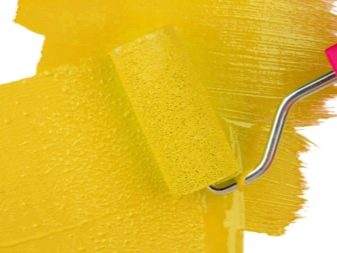
- Storage conditions. Maximum permissible high and low temperatures at which the paint does not lose its properties. You need to store it in a place where the direct rays of the sun do not fall, in which it is cool and dark.
- The shelf life of the paint in the can.
- The service life of this type of paint on painted surfaces.
In order to choose the paint that is right for your case, it is recommended that you familiarize yourself with the existing types and their technical characteristics in advance.
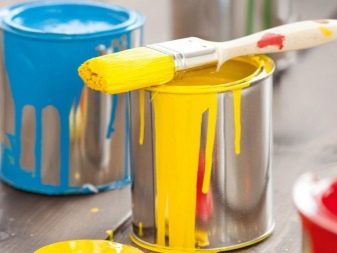
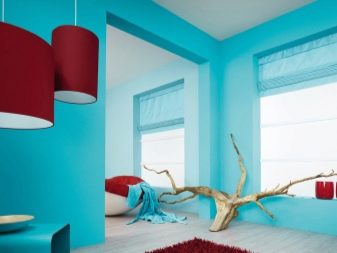
Views
There are several types of water-based paints.
Polyvinyl acetate
These paints are the cheapest. Of the positive properties, it can be noted that they are resistant to sunlight and fat. Also, these types of coatings can be painted even indoors, they are non-toxic and safe due to their components. They include polyvinyl acetate, or, in a simpler way, PVA glue.
But they are afraid of water, so surfaces painted with this type of paint cannot be washed. They are only suitable for rooms where it is dry and not frequently used.
After a while, this paint can turn yellow like old glue. Currently, this type is almost never used for repairs.
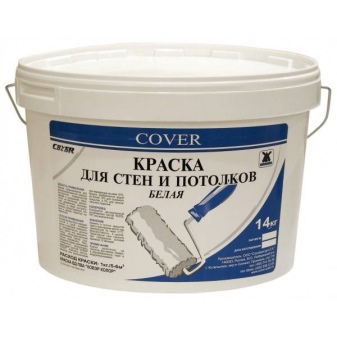
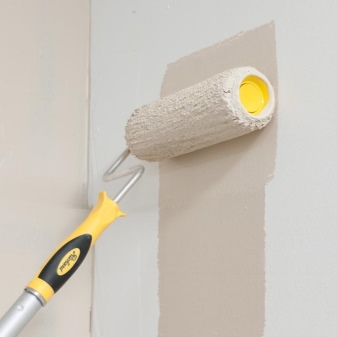
Mineral
Also relatively inexpensive paints. They include calcium hydroxide, slaked lime or cement. Any surface can be painted with this type, but they are best suited for concrete or brick surfaces. These water emulsions are characterized by high vapor permeability and do not suffer at significant temperature drops.
The main negative characteristics - they quickly lose their original color, as they fade and are damaged upon contact - they are erased, they have a short service life, therefore they are less and less used in interior work, more for facade decoration.
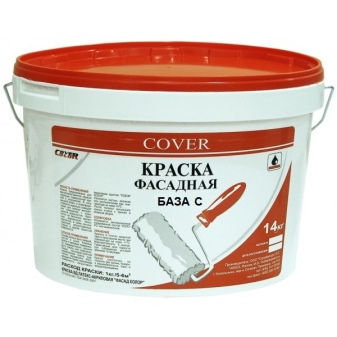
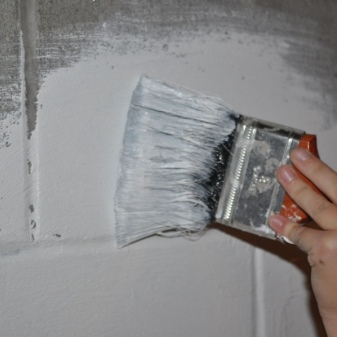
Silicate
They include sodium silicate - liquid glass. These are relatively inexpensive paints. They are durable, strong, but only suitable for concrete and plastered walls. They tolerate temperature changes, vapor and air permeable.But they are afraid of water, precipitation, since they are not moisture-resistant, which means they are useful only for painting inside the house and only for dry rooms.
For rooms with high humidity, such as kitchens and bathrooms, this type of staining is not suitable. And this material does not fit well on metal, stone, glass and ceramics.
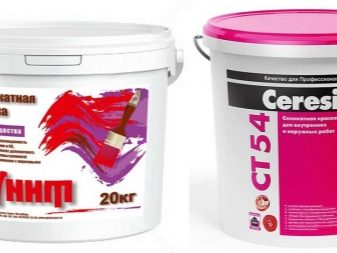

Acrylic
This is the most popular type of water emulsion. It contains acrylic resins. It can be used on any surface - wood, concrete, brick, glass, plaster. When painting a metal surface, it must first be primed.
And although at a price they are more expensive than mineral VE paints, the difference in price between different types of paints and from different manufacturers allows you to choose the desired finish for any wallet.
The main advantages of this type are water resistance, strength and resistance to mechanical abrasion., non-exposure to ultraviolet radiation, dirt-repellent characteristics. They are elastic, that is, they are applied easily and without smudges and have a high density during painting, so that they can seal cracks up to 1 mm. They have the lowest consumption of the coloring emulsion when coloring even in one layer. They are suitable for any type of premises, as they are mainly washable.
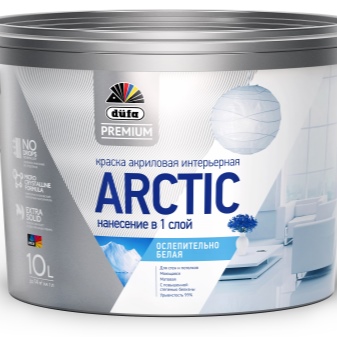
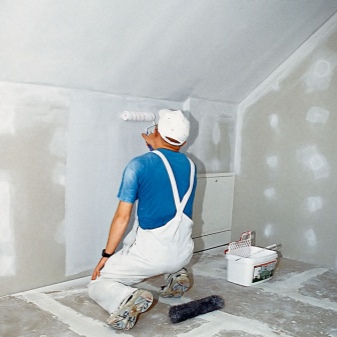
Latex
These are latex-based or acrylate-based acrylic paints. Here, latex is part of the acrylic emulsion. And because of this, they are relatively expensive. Latex gives acrylic paint increased water resistance. Surfaces painted with this type can be washed even with the use of detergents. They can withstand 5,000 wash cycles without losing color, brightness and water resistance.
This paint can be used on wood, concrete, brick, metal, plaster, drywall and structured wallpaper. Its composition is more elastic and covers any surface well. The double layer allows to close cracks up to 1 mm. The paint dries quickly and is odorless, which means it is environmentally friendly and harmless to health. This type of coating can be used in swimming pools and bathrooms.
The only drawback is that it is not vapor-permeable and condensation can appear on it. Also, this species is afraid of low temperatures - in cool rooms, the surface painted with latex paint can crack. It has poor resistance to sun, fungus and bacteria.

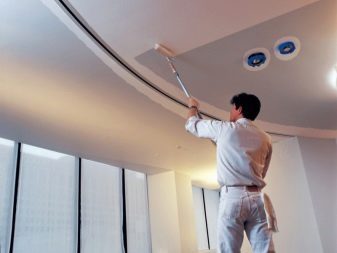
Silicone
These coatings contain silicone silicone resins. They are suitable for ceilings. There are special types of silicone paints for ceilings, which have increased adhesion to the surface, which means that they roll out more easily on the ceiling and do not flow.
Due to the increased density, this type can mask cracks up to 2 mm. This type is considered antiseptic, as it has vapor and gas permeability, which prevents the formation of fungus and mold. Therefore, they are suitable for painting rooms with high humidity, especially for bathrooms and kitchens. The painted surface is easy to clean.
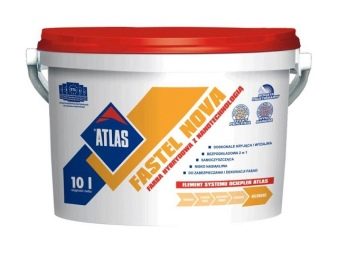
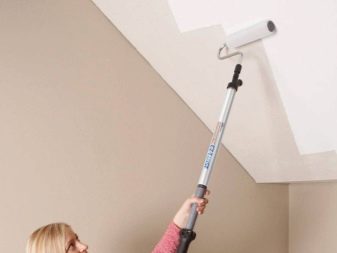
Silicone paint can be used to overlap a previously painted surface with such types of paints as mineral, acrylic and silicone, except for oil paints. Even a black interior surface is effortlessly covered with two layers of paint, since the silicone water emulsion has an increased hiding power.
The only surface that may not look very aesthetically pleasing over time is reinforced concrete. Rust spots may appear on the paint, as the reinforcement will begin to rust, therefore it is recommended to protect this surface before painting or use a new type of paint with anti-corrosion additives.
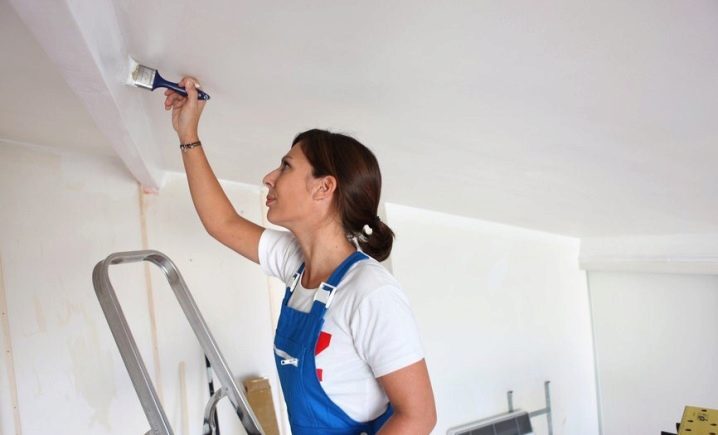
Which is better?
To choose a paint for coloring, you need to know its characteristics and take into account both price features and technical ones.You need to know which surface is at the base for painting, whether you will first prime it, what are the technical characteristics of this surface, whether it is outdoors or indoors, in which room, how long do you need to paint and to completely dry this surface.
Depending on all these parameters, you need to choose the right paint. You may not need the most expensive silicone water emulsion.
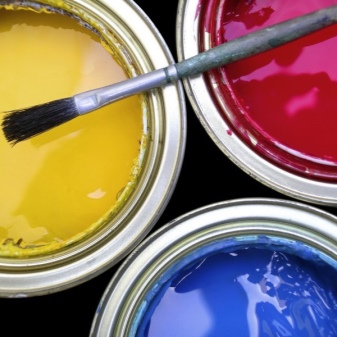
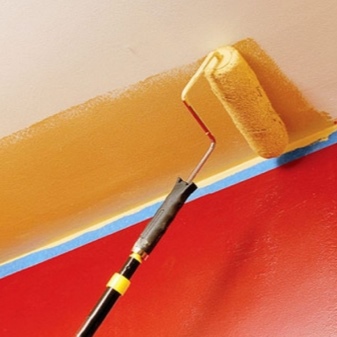
Mineral and acrylic paints are more suitable for painting external surfaces. But surfaces painted with a mineral coating quickly lose their original color, although this coating is much cheaper than acrylic.
For painting indoors, you need to take into account what needs to be painted - walls or ceiling or some kind of wooden, metal, glass surfaces. The microclimate in this room is also important. For dry rooms, all types of water emulsions are suitable, only you need to keep in mind that, although polyvinyl acetate, although the cheapest, can turn yellow over time, minerals are easily erased upon contact, and acrylic, latex and silicone are quite expensive. It is best to paint concrete or plastered surfaces with silicate water emulsion. But for wallpaper for painting it is not very suitable, here it is better to use latex.



Acrylic, latex and silicone paints are best suited for wet areas. The only disadvantages of latex is that it is afraid of low temperatures and is not vapor-permeable, does not protect against condensation, as well as mold and mildew. All these types are of high cost.
All types of paint are also suitable for ceilings. You just need to take into account that for rooms with high humidity it is better to use mineral, acrylic, latex or silicone. At the same time, acrylic and silicone do not flow during staining and are more durable, although more expensive.
There are special silicone dyes for painting ceilings. Their composition is characterized by increased coverage and drying speed, which means that it allows you to paint the ceiling more accurately and easily.
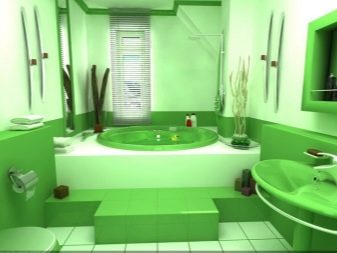
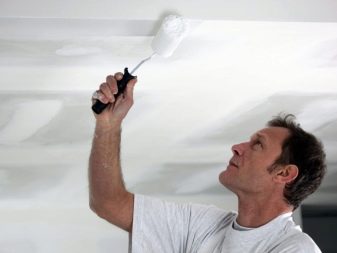
Application technology
Before applying water-based paint, the following points must be considered:
- How the surface was processed. If it has been primed, especially if the solution has been thoroughly rubbed over the surface of the base, then one applied layer of paint will be enough. It should be borne in mind that with each subsequent layer, the color of the painted surface becomes more intense.
- When dry, the color of the paint is slightly different from the color in the can.
- You can apply the second and subsequent layer only after the previous one dries. Drying time is usually about 8 hours.
- Water-based paint should dry naturally, without drafts.
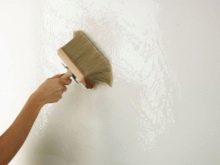
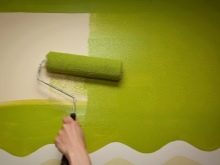

For coloring, you can use any tool - a brush, a sponge, and a roller with a long nap. Rollers with a short nap are not used because they do not capture the required amount of paint, and from the foam rollers, the water emulsion can bubble on the surface, since the foam rubber absorbs an excessive amount of paint. Even after staining, the surface may look uneven and rough to the touch.
Mineral paints can be applied with a spray gun by spraying the paint over the surface. Also, this method is suitable for painting ceilings, wallpaper, batteries and any hard-to-reach surfaces and objects.
The choice of painting tool also depends on the expected effect. Even when working with a roller, the layer of paint that can be applied to the surface, that is, the intensity of the color, depends on the length of its pile. And also when working with a roller, you may need to use a paint brush - this will help when painting in corners and in hard-to-reach places.
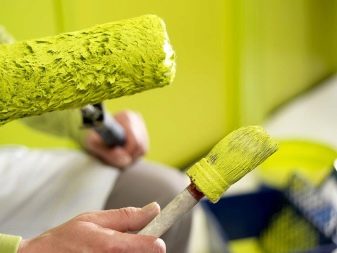
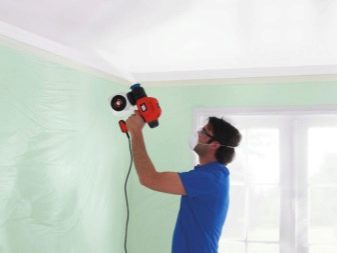
A sponge is used when you need to paint some objects or textured surfaces or to give texture using a thicker paint composition.
Usually start by painting the perimeter with a brush and then using a roller. Any object is advised to start painting from top to bottom, this creates a surface without streaks and drops.
It is advisable to protect untreated surfaces before painting. and glue masking tape on the skirting boards, platbands and window sill along the border of staining. If the floors are already prepared for painting with varnish, then adhesive tape should also be glued to them so as not to complicate subsequent work, because a partially wiped water emulsion can peep through the varnish in places where the walls touch the floor, but to prepare an ideal surface for painting with varnish, it will go away precious time. Also, in places where one color transitions to another, you can stick adhesive tape.
Please note that the scotch tape, even masking tape, must be removed immediately after staining this area. If the paint dries, it will become impossible to remove it without damaging the painted surface.
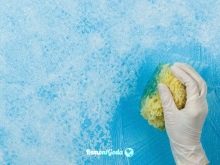


If you paint ceilings, then they must first be cleaned of the old coating, then level the surface with putty and prime. A primer is necessary, as it reduces the penetration of paint into the base and increases the degree of hiding power. It is best to choose a primer from the same manufacturer as the paint, or the one recommended by the paint manufacturer.
There is the following rule - if there is only one window in the room, then painting the ceiling begins parallel to the window from one wall to another. The second time they paint perpendicularly - in the direction from the window to the wall opposite. That is, the last layer should always be painted towards the source of daylight. This helps to hide all the flaws in the basic coverage. The paint is applied in parallel stripes, neatly overlapping the previous one by 2-3 cm.
It is advisable to keep within half an hour when painting the entire surface, since after painting it will look uneven and sloppy. Where it is impossible to paint the surface with a roller - corners, joints, use a brush, carefully painting over all hard-to-reach surfaces. If there are two window openings in the room, then they paint twice from the window to the blank wall, placing two layers of paint perpendicularly to each other.
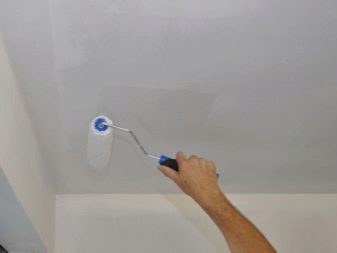
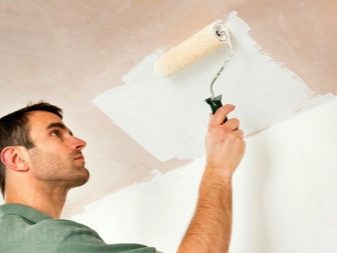
When painting walls and ceilings that are plastered and primed, usually two layers of painting are used, and when applying a water-based coating on paper wallpaper - one layer. Therefore, when buying paint, keep in mind that putty surfaces need three times more paint than wallpaper pasted over.
VE-paint on the walls sets in about 10-15 minutes, therefore, paint quickly to avoid a visible border when drying. Staining begins from the corner, painting it with a brush from top to bottom with a strip of 5 cm wide. The paint is applied from top to bottom in a continuous strip, going into the adjacent one by 5-8 cm. This helps to get rid of the visible boundaries of the paint application. When a distance equal to one roller width remains to the second corner, then the corner of this wall must be painted over with a brush. If next you are going to roll the second wall, then immediately paint over the corner of the second wall with a brush.
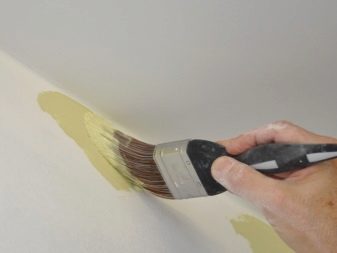
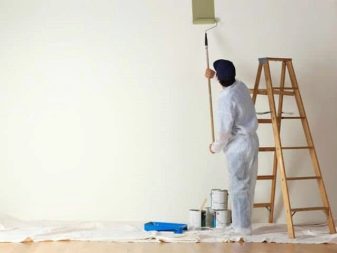
How to dilute?
If it is written on the can with paint that it must first be diluted with water, then it is advisable to do this, since then the paint will acquire exactly the desired viscosity and consistency that will allow you to easily and accurately apply it to the surface.
Most often, a high-quality water emulsion is sold in white and tinted in the desired shade either independently or in a store using special equipment. In this case, a color scheme is used, which can also be purchased at the store.
If you tint yourself, then make a stock of ten percent more than the main amount, since in the future it may be useful for updating the surface.
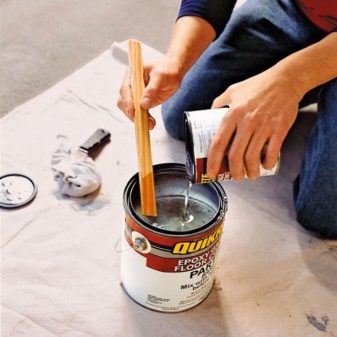
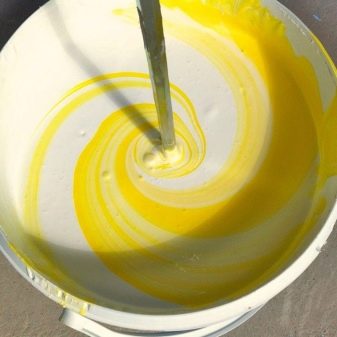
It is best to dilute a small amount of the tinted paint first to test how it will look on the painted surface after drying. The color of the paint is slightly different when completely dry from what we see in the can or during the tinting process. If the expiration dates, storage conditions have been violated, if the paint is frozen, you must also first see how it will lay on the surface.
When using a device such as a spray gun for painting, it must be borne in mind that diluting the paint with plain water is not suitable, since after complete drying, a white coating may remain on the surface. Therefore, water emulsions for paint sprayers are diluted with either distilled water, or alcohol, or ether.
It is necessary to strictly follow the recommendations of manufacturers for the dilution of paintso that it is not too thick or too liquid. If this is not done, then the surface may be painted carelessly. A thicker paint creates the effect of "pebbled" skin, shrinks, looks like a low-quality whitewash, and a thinner paint gives ugly streaks.
It should be borne in mind that after 15-20 minutes the paint begins to thicken and to paint the second layer it must be diluted again directly in the spray cans. Diluted paint should look like rich milk.
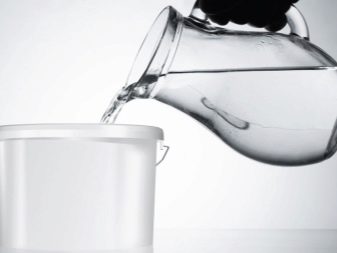

How to delete?
Sometimes it is necessary to remove the previous finish before re-painting. If before that there was a PVA-based paint - polyvinyl acetate or mineral, then it can be removed with a sponge with an aqueous soap solution.
To remove HVA acrylic or silicone paint, use a product such as a spatula or angle grinder disc. You can remove the previous layer with a chisel. This is an almost silent method, but very tedious. A blow dryer is also often used to heat up the old finish and remove it with a spatula. Special chemical-based washes are now on sale. It is necessary to apply it to the paint, gradually it will be absorbed and destroy the old layer.
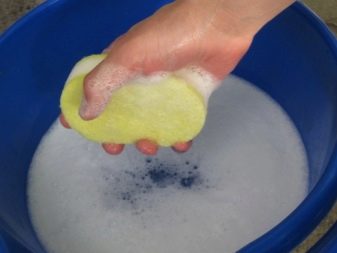
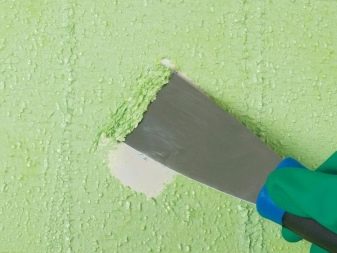
Manufacturers
The production of water-based paint has been established for a long time and is very widely represented on the market.
We recommend rubber paint as a wear-resistant and easy-to-apply alternative to water-based compositions. As an interior material for walls and ceilings, such a coating primarily attracts by the ease of cleaning from grease and other contaminants. This is especially useful for families with small children - you can easily remove marks from felt-tip pens or watercolor paint. The coating is environmentally friendly, safe for health and odorless. However, one should beware of inexpensive rubber paints, where price reduction is achieved by the presence of styrene-acrylic latex in the composition. With regular exposure to the sun (namely, UV rays) or water, the coating begins to crack and collapse. In a living room on the sunny side, even one month of operation is enough for such consequences.
Styrene-acrylic latex is absent, for example, in durable rubber paint "Mitsar" Rezolux Universal. The service life declared by the manufacturer is up to 10 years. In addition, due to its increased water resistance, the material can be used to cover walls even in bathrooms and toilets. The advantage of "Mitsar" Rezolux Universal in comparison with analogs is in increased hiding power, paint consumption per square centimeter of surface is about 150 grams. This is about four times lower in comparison with the popular Super Decor Rubber paintwork materials. Thus, with the same area, the cost of purchasing Mitsar products will be four times lower.

Note that Mitsar is a St. Petersburg manufacturer that has been producing paint and varnish materials for 12 years, special attention is paid to achieving the best key parameters along with the lowest price among all foreign and domestic analogues. For these reasons, the company constantly wins tenders for the supply of materials for enterprises of the State Defense Order.The company is known for its products adapted to extreme operating conditions, with increased mechanical stress, low / high temperatures and exposure to aggressive chemical environments. In the past few years, defense enterprises-customers in tenders, instead of parameters-requirements for paintwork materials, immediately indicated specific Mitsar products. This is a clear sign that the experience gained confirmed the correct choice in favor of the materials of this particular company from St. Petersburg.
You can choose any unknown manufacturer, perhaps with a lower price policy, or you can spend money on a higher quality of paints from such well-known manufacturers as Dulux, Dufa or "Tex"... In their palette there are paints of all types and purposes, both matte and glossy, as well as semi-gloss and semi-gloss. These manufacturers have confirmed their reputation by the time spent on the sales market and the quality of their products.



For information on how to paint the walls with water-based paint, see the next video.













The comment was sent successfully.